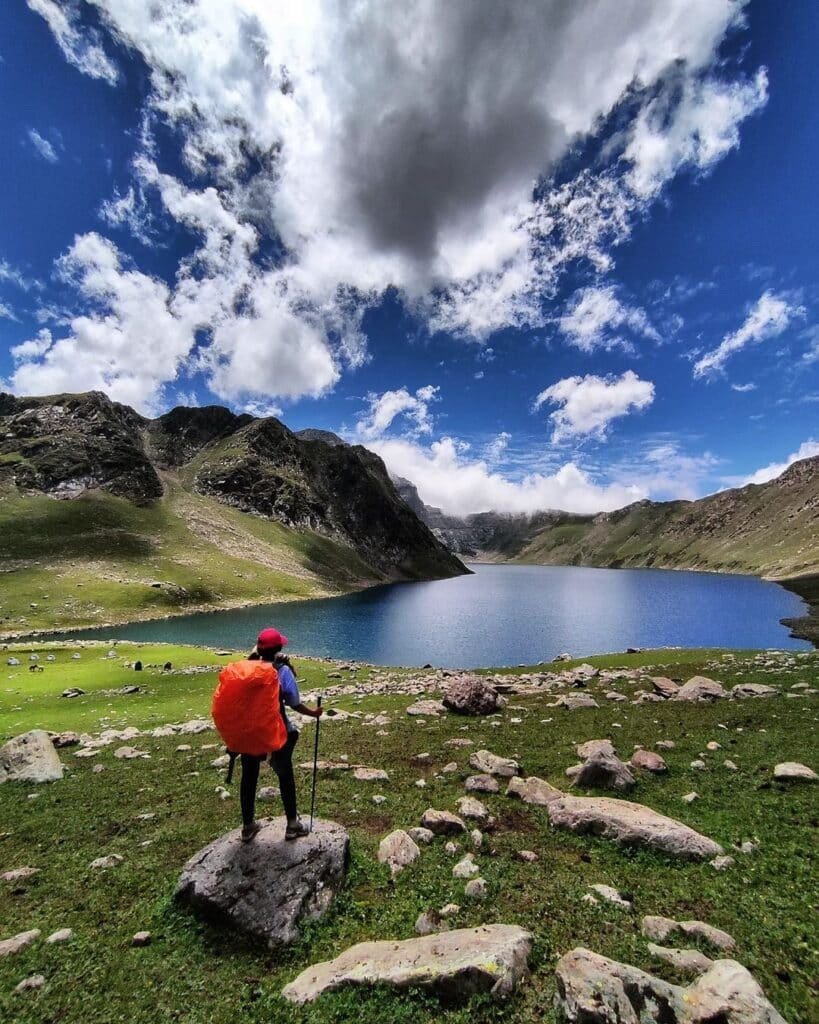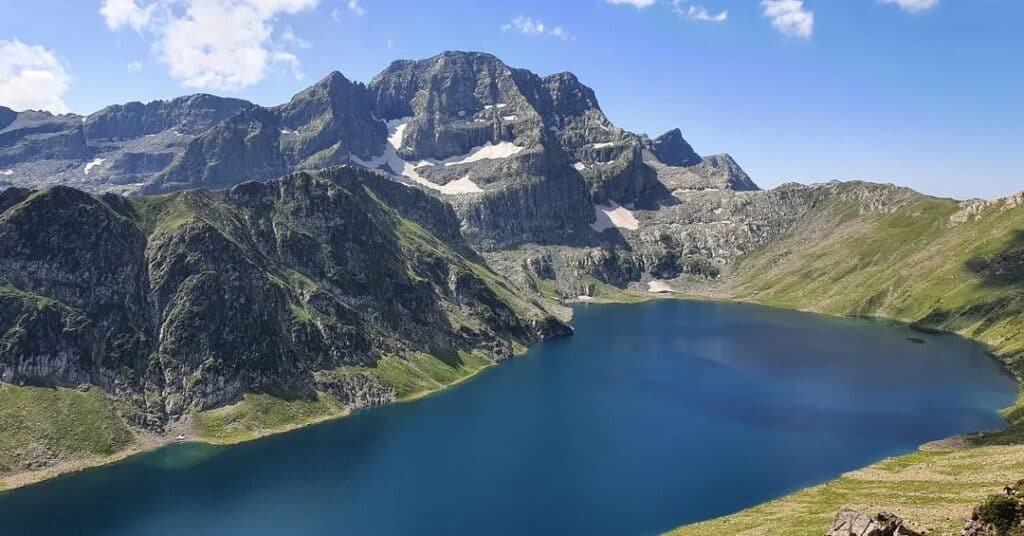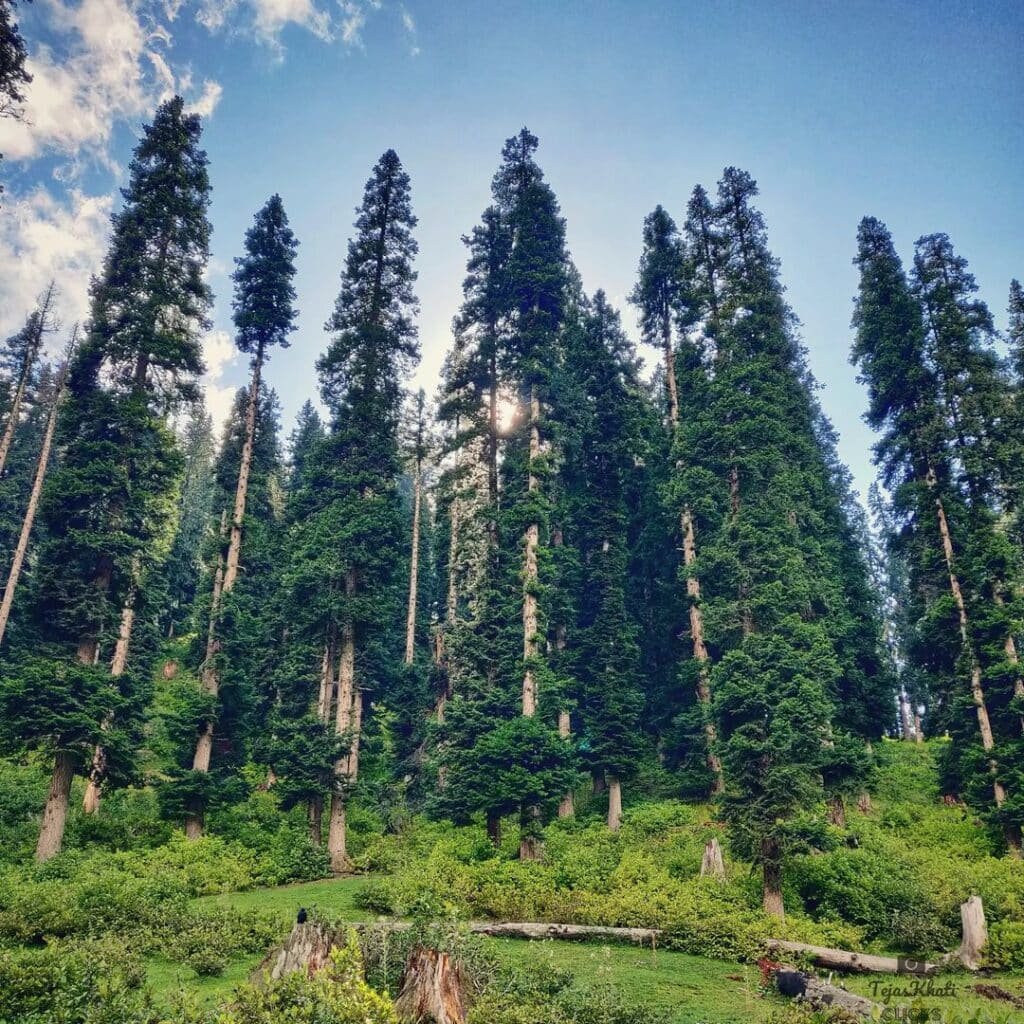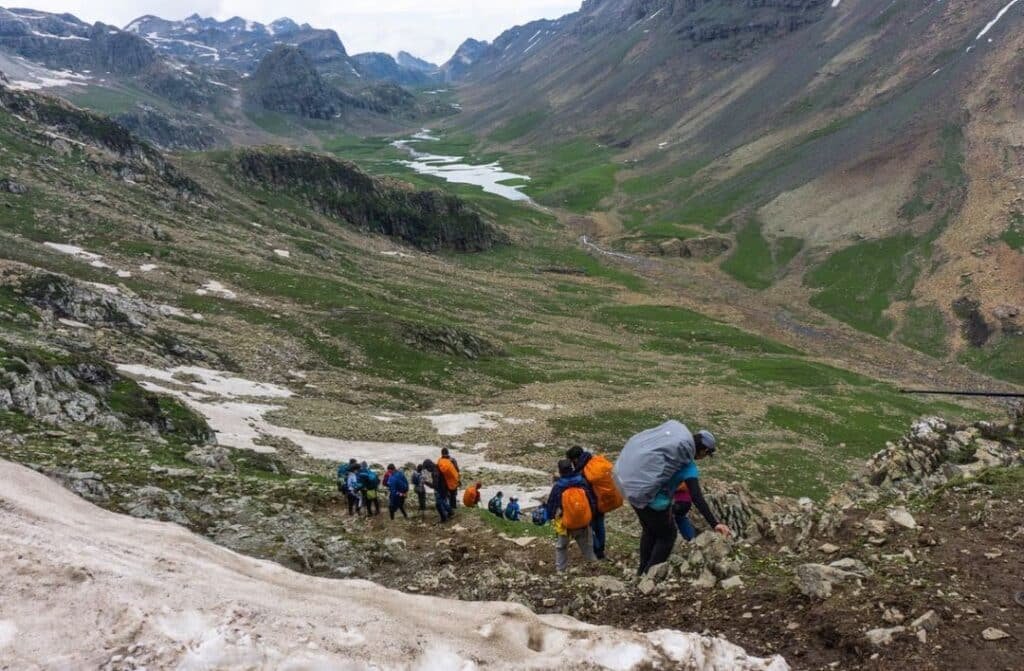Tarsar Marsar Trek: An Ultimate Guide
- Trekking Destinations
-
Apr 23
- Share post
Table of Contents
ToggleTarsar Marsar Trek: An Introduction
The Tarsar Marsar trek is among the most popular in the Indian Himalayas. The trek takes you through the beautiful valleys of Kashmir, offering breathtaking views of the Tarsar and Marsar lakes. The trek is moderate and can be completed in about 7-9 days. In this article, we will discuss the reasons to go on the trek, what to expect on the trek, and how to plan for it.
Reasons to go on Tarsar Marsar Trek
- The Tarsar Marsar trek is ideal for those who want to experience the beauty of the Himalayas without having to endure a challenging trek. The trek offers diverse landscapes, including beautiful meadows, dense forests, and stunning lakes.
- The Tarsar and Marsar lakes are the highlights of the trek, and they provide an opportunity to camp by the lakeside and enjoy the serene surroundings
What to Expect?
- The trek starts from the Aru Valley and takes you through beautiful meadows and dense forests. As you climb higher, you will see stunning views of the Himalayan peaks.
- The highlight of the trek is the Tarsar and Marsar lakes, which are situated at an altitude of 13,000 feet. Snow-capped peaks surround the lakes and offer a breathtaking view. The trek also involves crossing streams, glaciers, and high-altitude passes.
Planning Your Tarsar Marsar Trek
- Best Time to Go: The best time to go on the is from June to September when the weather is pleasant, and the skies are clear.
- Trek Difficulty and Fitness Requirements: The trek is moderate and requires a reasonable fitness level. You should be able to walk for 5-6 hours a day with a backpack.
The trek involves steep ascents and descents, rocky terrain, and high altitude. Trekkers are advised to undergo physical training and acclimatization before embarking on the trek.
- Acclimatization: Since the trek involves high-altitude passes, acclimatizing is essential. You should spend a day or two in Srinagar or Aru Valley to acclimatize before starting the trek.
- Required Permits and Fees: You must obtain a permit from the Forest Department to enter the Tarsar Marsar area. The permit fee is around INR 1000 per person. However, if you are going with a trekking organization, the organization already arranges this.
- Gear and Equipment Checklist: You will need a good pair of trekking shoes, a backpack, a sleeping bag, a tent, warm clothes, and rain gear. You can also rent equipment from trekking agencies. Again, while going with a trekking group, you only need to have good trekking shoes, dry-fit clothing, a 40-60L trekking bag, personal toiletries, etc. A detailed list is shared below.
- Fees Charged by Trekking Groups: Trekking agencies charge around INR 14,000 – INR 16,000 per person for the Tarsar Marsar trek, which includes food, accommodation, entry fees, and guide charges. Some organizations also have the pick-up and drop from Srinagar to the start point & back.
- Best Season: The best time to go on the Tarsar Marsar Trek is between June and September when the weather is pleasant and the trails are open. During this time, the region experiences mild temperatures and clear skies, making it ideal for trekking. However, there maybe rain showers on certain days.
Prefer trekking in groups and having the entire planning sorted out by someone else?
We list over 100 groups in India with their events, contact details, social links and ratings.
Getting to the Start Point
- How to Reach Tarsar Marsar Trek Starting Point: The Tarsar Marsar trek starts from the Aru Valley, about 110 km from Srinagar. You can take a taxi from Srinagar to Aru Valley.
- Local Transportation Options: Local buses and shared taxis are available from Srinagar to Pahalgam, where you can take a cab to Aru Valley. The best option is to take shared taxi from Srinagar, as they run frequently and are affordable (Approx INR 150 – 200 per person).
- Accommodation Options Before and After the Trek: Srinagar and Pahalgam have several accommodation options. You can also stay in tents or guesthouses in Aru Valley.
Tarsar Marsar Trek Itinerary
Day 1: Srinagar to Aru Valley
- The first day of the trek involves a four-hour drive from Srinagar to Aru Valley, where you will spend the night. The drive itself is a treat, with stunning scenery all around.
Day 2: Aru Valley to Lidderwat
- Distance: 10 KM | Time: 6 Hours
- The trek begins with a six-hour trek from Aru Valley to Lidderwat. The trail takes you through pine forests, meadows, and streams.
Day 3: Lidderwat to Shekwas
- Distance: 6 KM | Time: 5 Hours
- The third day of the trek is a five-hour hike from Lidderwat to Shekwas. You will pass through dense forests and cross a stream before reaching your destination.
Day 4: Shekwas to Tarsar Lake
- Distance: 4 KM | Time: 5 Hours
- The highlight of the trek, day four, takes you to the beautiful Tarsar Lake. It’s a five-hour trek through lush green meadows, and you’ll also encounter a glacier along the way.
Day 5: Tarsar Lake to Sundarsar
- Distance: 6 KM | Time: 5 Hours
- The fifth day involves a five-hour trek from Tarsar Lake to Sundarsar. The trail takes you through some challenging terrain, but the stunning views throughout the day make it all worthwhile.
Day 6: Sundarsar to Homwas via Marsar Lake
- Distance: 11 KM | Time: 7 Hours
- The sixth day is a five-hour trek Sundarsar to Homwas via Marsar lake. You will encounter a few streams and meadows along the way, making for a pleasant trekking experience. This will be one of the toughest days of the trek because of the ascent involved.
Day 7: Homwas to Aru & Drive to Srinagar
- Distance: 13 KM | Time: 7 Hours
- The last day of the trek is one of the easiest days and can be easily covered in 7 hours with breaks in between for lunch & snacks.
Note: This is a general itinerary, which is followed by most of the trekking groups in India. However, there might be slight differences on the itinerary depending on the trekking group you opt to go with.
Tarsar Marsar Trek Highlights
Stunning Scenery:
The Tarsar Marsar Trek offers some of the most beautiful views you’ll ever see. From lush meadows to snow-capped peaks, this trek has it all.
Wildlife Sightings:
The trek is home to some unique flora and fauna, including the Himalayan black bear, musk deer, and snow leopard.
Local Culture:
The trek takes you through several remote villages, giving you a glimpse into the local culture and way of life and the local trek guides have amazing local stories and folklore which give you a glimpse of their culture and history.
The Tarsar and Marsar Lakes:
The two lakes are the highlight of the trek, offering stunning views of the surrounding peaks and a sense of serenity that is hard to find elsewhere.
Safety and Health
Altitude Sickness: The trek reaches an altitude of 13,000 feet, so it’s essential to acclimatize yourself to the altitude before starting the trek. Hence, you should reach Srinagar a day or two in advance & stay hydrated throughout the trek and carry hydration tablets if necessary.
Water and Food Safety: The trek involves several streams and water sources, but it’s essential to carry a water purification system to avoid water-borne illnesses. Also, make sure to carry high-energy snacks and stay hydrated throughout the trek.
First Aid Kit: Carry a basic first aid kit that includes essential medications, bandages, and other medical supplies. However, if traveling with a trek group, they make these arrangements for you.
Emergency Evacuation: In case of an emergency, make sure to have travel insurance that covers evacuation services. Make sure to check with the trek group if they provide the travel insurance to cover your expenses.
FAQs
The trek is around 48 kilometers long and takes about 7 days to complete.
The best time to go on the trek is from June to September when the weather is pleasant, and the lakes are not frozen.
The trek is considered moderately difficult, with some challenging terrain, but it’s doable for most people with proper preparation.
The trek is generally safe, but it’s essential to take proper precautions and follow safety guidelines to avoid any mishaps.
You’ll need a sturdy pair of trekking shoes, warm clothes, a backpack, a tent, a sleeping bag, and a water purification system.
Conclusion
- In conclusion, the Tarsar Marsar Trek is an incredible adventure that offers breathtaking scenery, diverse wildlife sightings, and an immersive experience of the local culture.
- From the picturesque Aru Valley to the serene Tarsar and Marsar Lakes, the trek takes you through some of the most beautiful landscapes in the world. It’s important to keep in mind that the trek requires proper planning, preparation, and caution, especially when it comes to altitude sickness, water and food safety, and emergency evacuation.
- However, with the right mindset and guidance, this trek can be a life-changing experience that you’ll never forget. So what are you waiting for? Start planning your Tarsar Marsar Trek adventure today!
Did you find this trek guide for the Tarsar Marsar trek informative?
We have 100s more such guides on similar off-beat experiences & we send out such guides, offers, hidden gems, and trekking destinations weekly via email.
Subscribe to our newsletter to get them directly into your inbox.
Comments
Add a comment
Leave a Reply · Cancel reply
This site uses Akismet to reduce spam. Learn how your comment data is processed.







Kashmir Great Lakes Trek: Ultimate Guide - Nomads of India
June 15, 2023 at 1:46 pm[…] Related Article Discover the scenic beauty of the Tarsar Marsar trek – an easier alternative to the Kashmir Great La… […]
Trekking Shoes: The Ultimate Guide 2023 - Nomads of India
June 25, 2023 at 10:48 pm[…] insulation, and durability. Mountaineering boots. They are good for multi-day hikes like the Tarsar Marsar trek or the Kuari pass […]
Rupin Pass Trek: Unleash the Thrill of the Himalayas - Nomads of India
July 3, 2023 at 12:02 am[…] Kuari Pass, Bhrigu Lake, Brahmatal Trek, Sar Pass Trek, Shrikhand Mahadev Trek, Buran Ghati Trek, Bali Pass Trek, Kareri Lake Trek, Tarsar Marsar Trek […]
Bhrigu Lake Trek: Ultimate DIY Guide 2023 - Nomads of India
July 3, 2023 at 12:05 am[…] Kuari Pass, Brahmatal Trek, Sar Pass Trek, Shrikhand Mahadev Trek, Buran Ghati Trek, Bali Pass Trek, Kareri Lake Trek, Rupin Pass, Tarsar Marsar Trek […]
Kareri Lake Trek: The Ultimate DIY Guide - Nomads of India
July 3, 2023 at 12:16 am[…] Kuari Pass, Bhrigu Lake, Brahmatal Trek, Sar Pass Trek, Shrikhand Mahadev Trek, Buran Ghati Trek, Bali Pass Trek, Kashmir Great Lakes Trek, Rupin Pass, Tarsar Marsar Trek […]
Bali Pass Trek: Exploring the Majestic Himalayan Trail - NOI
July 3, 2023 at 12:17 am[…] Kuari Pass, Bhrigu Lake, Brahmatal Trek, Sar Pass Trek, Shrikhand Mahadev Trek, Buran Ghati Trek, Kashmir Great Lakes Trek, Kareri Lake Trek, Rupin Pass, Tarsar Marsar Trek […]
Hampta Pass - Top 5 reasons why it should be your first Himalayan trek - Nomads of India
July 3, 2023 at 12:18 am[…] Kuari Pass, Bhrigu Lake, Brahmatal Trek, Sar Pass Trek, Shrikhand Mahadev Trek, Buran Ghati Trek, Bali Pass Trek, Kareri Lake Trek, Kashmir Great Lakes Trek, Rupin Pass, Tarsar Marsar Trek […]
Epic Adventure Awaits: The Ultimate Goechala Trek Guide - NOI
July 4, 2023 at 5:08 pm[…] Kuari Pass, Bhrigu Lake, Brahmatal Trek, Sar Pass Trek, Shrikhand Mahadev Trek, Buran Ghati Trek, Bali Pass Trek, Kareri Lake Trek, Rupin Pass, Tarsar Marsar Trek […]